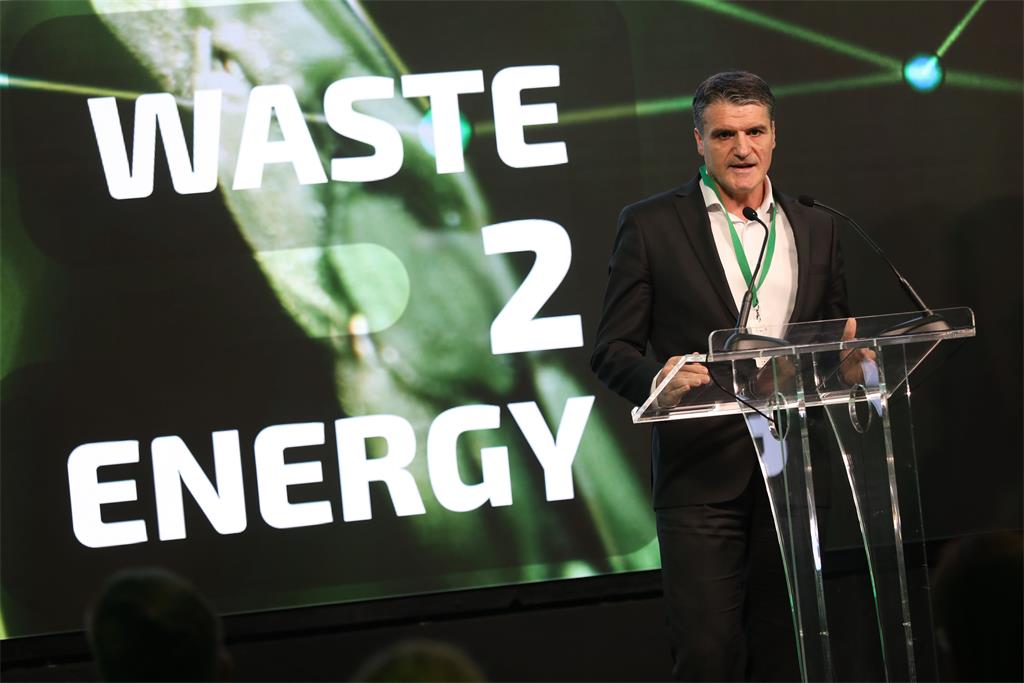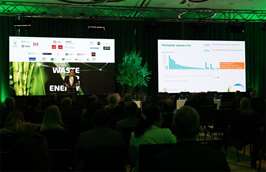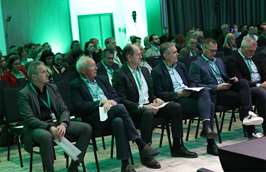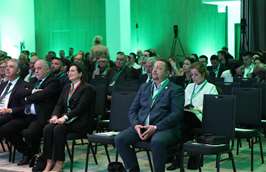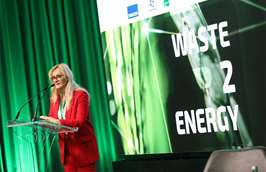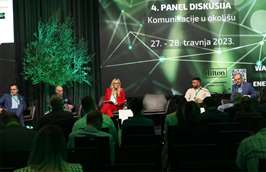27.04.2023.
The representatives of the Fund attended the “Waste2Energy” conference, which was held in Zagreb for a second year in a row and attracted many speakers from Croatia and abroad. The goal of the event was to inform the public about the possibilities of waste-to-energy recovery in the circular economy, and to give an overview of different technologies and their environmental impact.In his opening speech, the deputy director of the Fund, Mirko Budiša, pointed out that on the path to the circular economy Croatia had made significant progress in waste management. He believes that a lot of effort still has to be made to achieve the 2035 target of only 10% of unrecyclable municipal waste being landfilled: “We primarily have to prevent waste generation and encourage reuse, and through separate waste collection and sorting utilise the valuable raw materials to the greatest possible extent. Although, and taking into account the sustainable waste management hierarchy, a part will always remain that cannot be used and will end up on a landfill. So, energy recovery is one of the ways we can use residual waste and generate energy at the same time.” He added that there were almost 500 waste energy recovery plants across Europe, and this fact supports the legitimacy of such technological solutions. Of course, they require a responsible approach and choosing the best available technologies for flue gases treatment and ongoing reduction of CO2 emissions.
“The Waste2Energy Conference is trying to offer a new approach to the problem of thermal treatment of waste. Along with a constructive discussion and opposing opinions on different approaches to the technological solutions, we will present the best practice examples from the region. The most common form of municipal waste disposal in the EU is thermal recovery. The technologies have been refined, the whole waste management and preparation system has been vastly improved,” said Tomislav Lukić, PhD, the member of the Organisation Board of the company behind the conference.
The deputy director of the Fund, Mirko Budiša, held the introductory presentation with an overview of thermal waste treatment in Europe. He pointed out that the developed European countries, which were considered as leaders in green technologies, had the lowest rates of landfilling of waste, and had integrated the “waste to energy” concept into their environmentally sustainable systems. He mentioned the examples of Vienna and Copenhagen, which have turned their waste-to-energy power plants into a brand and tourist attraction. He pointed out that three waste management centres were operational in Croatia, while the remaining ones were either in the construction phase or documentation preparation phase. Budiša also said that the SRF fuel resulting from the treatment in Croatian WMCs could not be used on site, and instead of generating a profit, it had become a cost since disposal had to be paid to third parties. So, neighbouring countries get not only heating and electricity from our waste, but make a profit on top of that, meaning Croatia generates losses on several levels.
A panel discussion was held on the topic “Is thermal waste recovery needed in Croatia”, with the panellists including: deputy director Budiša, the director of the Industry Sector at CCE Marija Šćulac Domac, energy expert Igor Grozdanić, Zdravko Stipetić, the director of director of EPC Sector at Andritz TEP, and independent expert Viktor Simončić.
Part of the conference was dedicated to the importance of communication, which is an integral part of waste management projects, especially in the case of construction of waste treatment plants. Communication management and approach – which often has the NIMBY – or “not in my back yard” effect, was presented by the head of the PR department at the Fund Lidija Tošić. “The targets we’ve set for waste management cannot be achieved if there is no mutual communication strategy. It has to deal with a complex structure of stakeholders who have different roles and interests, which are often not complimentary. In order for all parties to understand one another, we have to set up s strategic communication framework that will allow timely information reaching all stakeholders in the process. We have to foster an open and constructive dialogue and detect the challenges we come across in establishing this system,” said Tošić.


